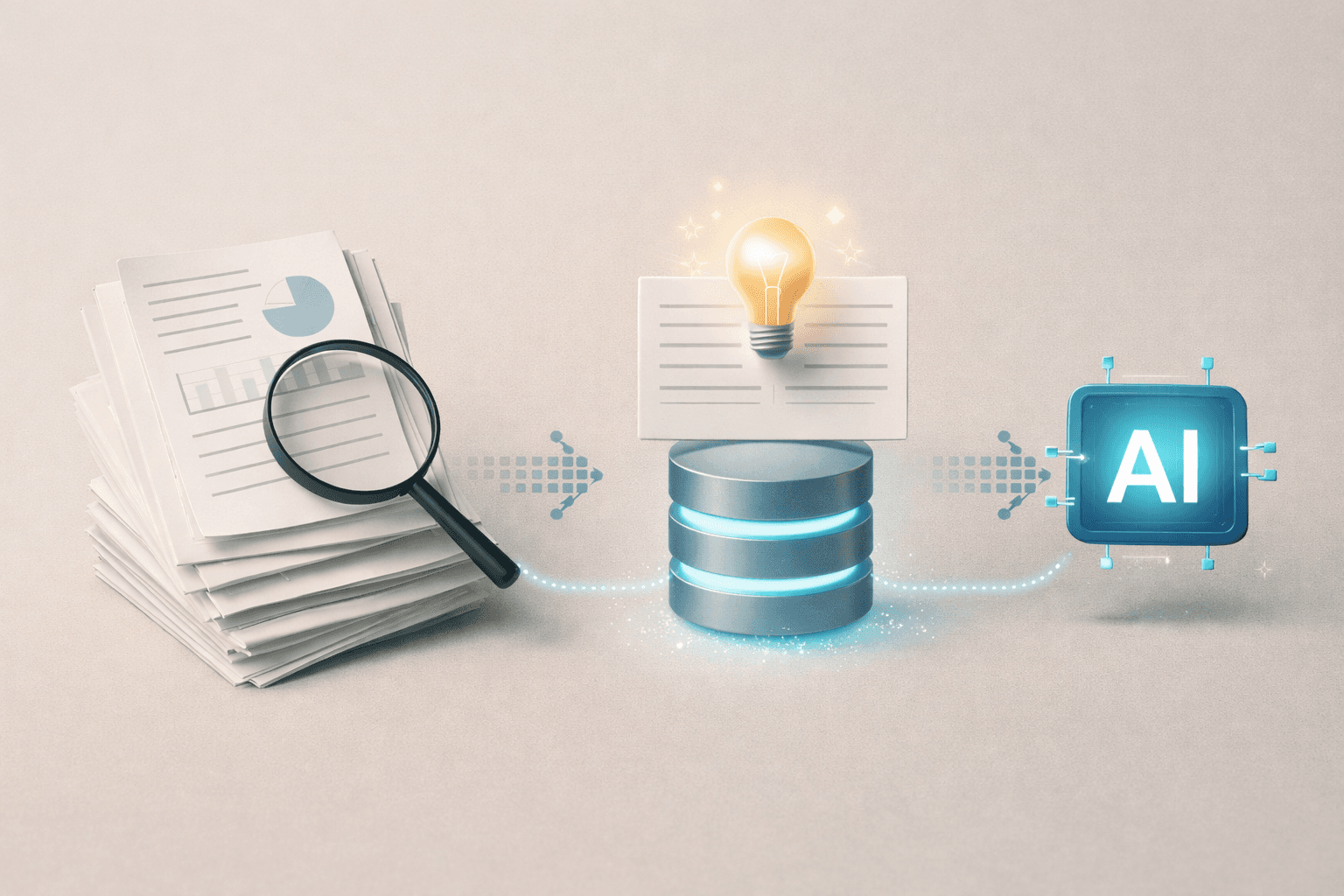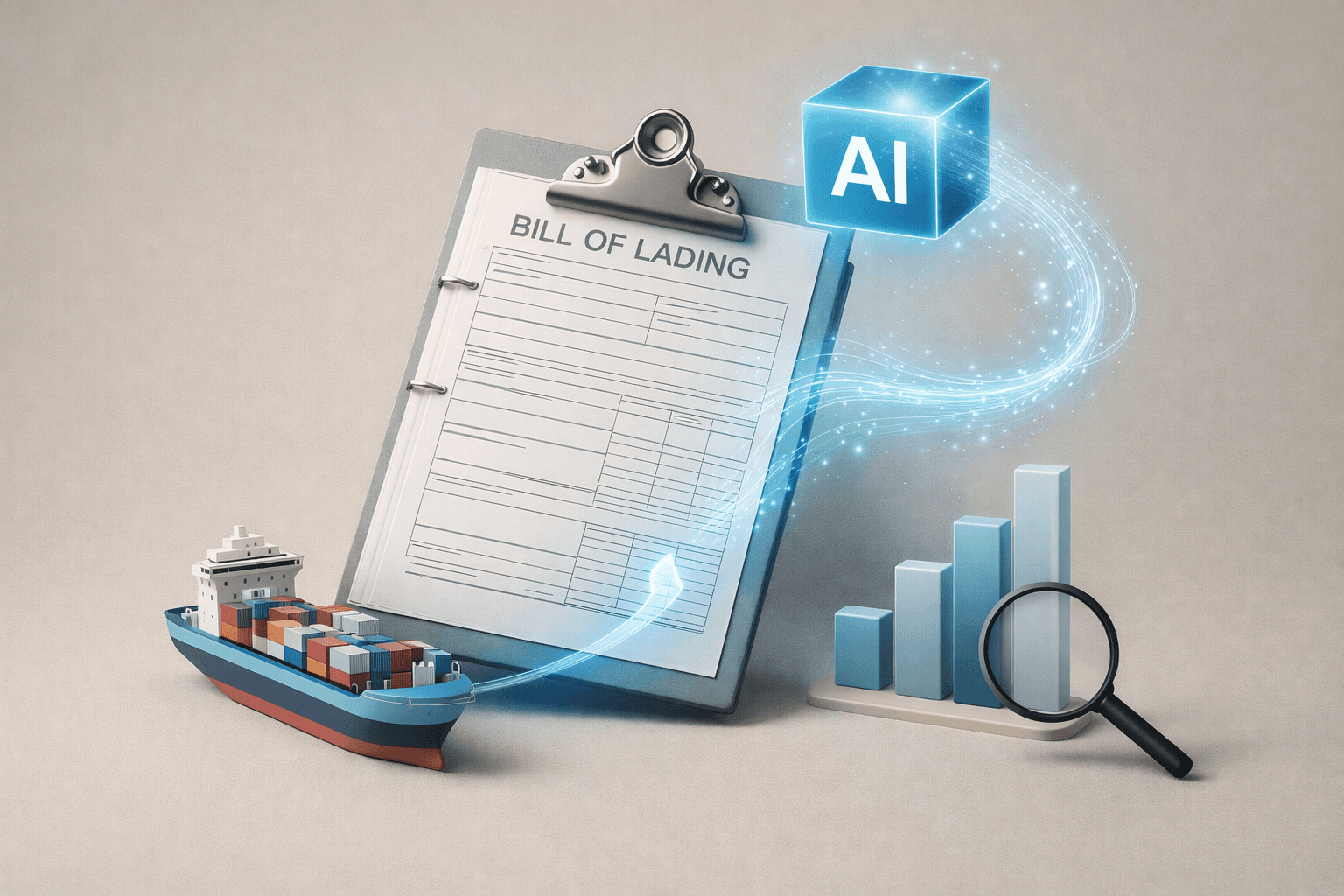Insight
AI Document Search: Definition, Architecture, and Core Technologies
Sep 17, 2025
What is AI-Powered Document Search?
The Limitations of Traditional Keyword Search
Traditional keyword-based search systems return results only when the user’s input exactly matches a word or phrase in the document. While this approach may be efficient in terms of speed, it fundamentally fails to comprehend the user’s intent or the context of a query. As the language within documents becomes more varied—or as the query itself becomes more abstract or complex—keyword searches become increasingly inaccurate. For example, when searching for “settlement criteria,” documents using phrases like “settlement procedure” or “expense classification” might be missed. Keyword searches also struggle with typos, singular/plural variations, or changes in word order, which dramatically reduce their precision.
NLP and the Rise of Semantic Search
To overcome these limitations, Natural Language Processing (NLP) has emerged as a transformative technology. AI-powered document search systems analyze user queries not just at the word level, but semantically—interpreting the meaning and context behind the query. For instance, when a user asks, “Can I see the travel expense breakdown?” traditional search might only return documents with the exact term “travel expense.” In contrast, an NLP-based system understands related concepts like “cost,” “spending,” or “travel-related expenditures” and includes them in the results. This significantly improves both accuracy and retrieval efficiency.
Understanding Unstructured Documents with AI
Documents in the real world often come in various formats such as PDFs, scanned images, emails, and Korean HWP files. These unstructured formats lack consistent structure, making keyword matching ineffective. AI-based document search applies OCR, NLP sentence parsing, and layout recognition to convert unstructured data into structured, searchable formats. This includes detecting text, tables, images, and annotations, and reorganizing them into meaningful units. Essentially, the system doesn’t just “read” documents—it “understands, restructures, and connects” them autonomously.
How AI Document Search Systems Work

Document Ingestion and Preprocessing: OCR, Scanned Files, Image Analysis
The first step is collecting documents and preparing them for AI processing. If a document is a scanned image or PDF, OCR converts it into text and splits it into paragraphs. Structural elements like tables, lists, headers, and footers are also processed. Language detection, encoding conversion, noise removal, and character correction are crucial post-processing steps that directly affect search accuracy.
Indexing and Embedding: Semantic Vectorization
Preprocessed documents are broken into meaning-based units and converted into vectors using embedding techniques. These vectors are stored in databases like FAISS or Qdrant and later compared to the vector of the user’s query to calculate semantic similarity. Unlike keyword search, this approach identifies semantically similar text, not just identical words.
Query Parsing and Similarity Scoring: From Natural Language to Context Matching
User questions are embedded into vector space and compared with document embeddings using cosine similarity or dot product. The top-k most similar passages are extracted. When combined with a GPT-powered LLM to generate a response, this forms a RAG (Retrieval-Augmented Generation) system—greatly improving both the accuracy and trustworthiness of results.
Ranking and Source Attribution
Results are ranked based on similarity, trust level, document recency, and metadata. Titles, chapters, and page numbers are included in the results for better readability. Highlights show exactly where the answer appears, and source citation is critical in legal, audit, and compliance environments.
Core Technology Components
Vector Search Engines (FAISS, Qdrant, etc.)
These engines rapidly search through large vector datasets. Enterprise use cases require scalability, security, and support for multiple users. FAISS, Qdrant, Weaviate, and Pinecone support GPU acceleration, index compression, and data sharding for large-scale systems.
Automatic Metadata Tagging and Filtering
Metadata like creation date, author, department, and category are extracted and indexed to enable precise filtering. For example, queries like “contracts after 2022” or “reports from the legal team” rely on metadata. Document classifiers can also auto-categorize files to improve quality.
RAG-Based Retrieval and GPT Response Integration
RAG combines retrieval and generation: it finds relevant documents and uses LLMs like GPT-4/5 to generate source-grounded responses. This structure provides factual accuracy and natural language flexibility, making it ideal for complex questions and long documents.
Feedback Loops and Quality Monitoring
User behavior—such as clicks and time spent—helps improve future search rankings. Systems can alert administrators about performance degradation and support dashboards to monitor search quality in real time.
Real-World Use Cases
Legal Teams: Clause Extraction and Comparison
Legal teams often compare clauses across hundreds of contracts. AI search automates this, saving time and surfacing risks through clause clustering and legal term detection.
Customer Support: Instant Answers from FAQs and Manuals
AI-powered systems extract the most relevant answers from support documents, enabling chatbot integration and reducing agent load while maintaining service consistency.
Research Institutes: Topic Summarization and Citation Tracking
For academic teams, AI can cluster papers by topic, extract citations, and auto-summarize content, improving collaboration and research speed.
Compliance: Automatic Extraction of Regulatory Requirements
AI can identify specific obligations or sanctions within large regulatory documents and generate alerts or compliance reports, which are vital during internal audits.
Key Implementation Considerations

Maintaining Semantic Precision and Relevance
Accuracy depends not just on similarity but on trust, consistency, and source visibility. Highlighting, citations, and feedback collection are essential features.
Speed, Indexing Performance, and System Scalability
When dealing with tens of thousands of documents, fast indexing and retrieval require distributed indexing, caching, GPU acceleration, and parallel architecture. Version tracking and sync capabilities are also critical.
Data Privacy and Compliance
Systems must meet standards like GDPR, HIPAA, and ISMS-P. Role-based access control, audit logs, encryption, and system audit readiness are mandatory—especially in regulated sectors like government or finance.
Feedback-Based Quality Improvements
Collecting feedback (e.g., “Was this helpful?”) helps retrain search models. Dashboards for tracking positive/negative ratings support quantitative improvement.
Implementing AI Document Search with Wissly
Multi-Format Document Processing (PDF, HWP, Images, etc.)
Wissly automatically processes PDFs, scanned images, and Korean HWP files into structured indices, ensuring consistent and precise search experiences.
GPT-Based Q&A with Highlighting and Citation
In addition to generating answers, Wissly displays source document titles and highlights relevant passages to boost trust and user speed. It also suggests related documents based on the query.
On-Premises Architecture for Privacy and Security
Unlike cloud SaaS, Wissly runs fully on-premises for highly secure environments. It eliminates data exposure risks and operates on isolated infrastructure.
Real-Time Indexing and User Behavior Loop
Index updates automatically reflect new or modified documents. User logs help the system improve based on frequently searched or failed queries.
Conclusion: From Search to Understanding—A New Paradigm
Moving Beyond Keywords to Meaning-Centric Discovery
AI document search connects user intent to document context, enabling fast, accurate information retrieval—even in massive document repositories. It’s no longer a luxury, but a necessity in today’s knowledge-saturated world.
Wissly: The Smartest Way to Explore Enterprise Knowledge
With its RAG-powered engine, GPT responses, traceable sources, and secure architecture, Wissly is the enterprise-grade platform for organizations that need accurate, explainable, and private AI document search. It’s time to switch from matching words to understanding ideas.
Recommended Content










